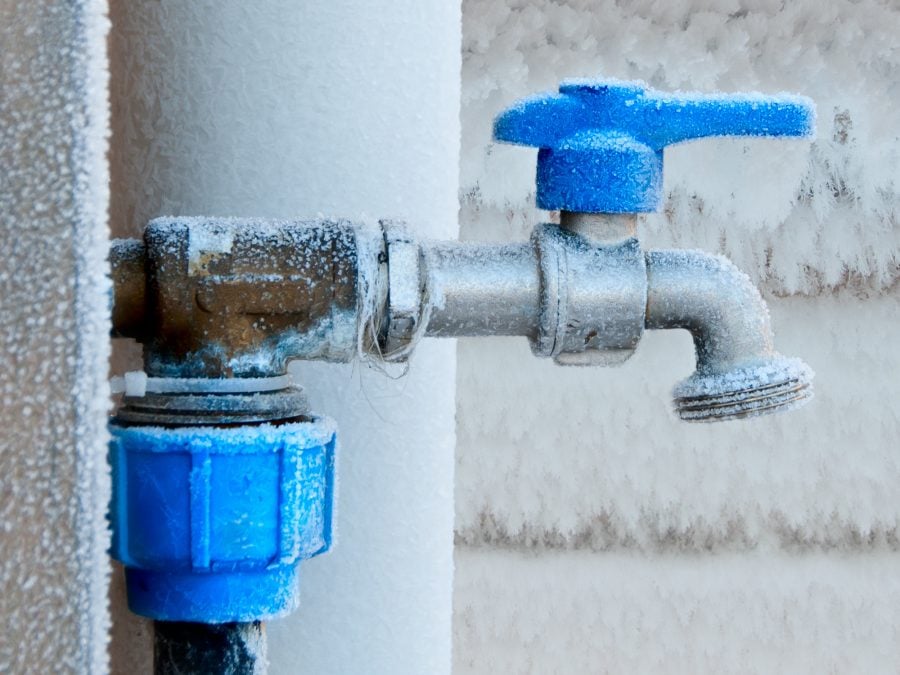Listed here further down you can get lots of high-quality information related to Winter Plumbing Precautions: Preventing Frozen Pipes.

Winter can damage your plumbing, particularly by freezing pipelines. Right here's exactly how to stop it from happening and what to do if it does.
Introduction
As temperatures drop, the danger of frozen pipes rises, possibly bring about expensive repair work and water damages. Comprehending how to stop icy pipes is crucial for home owners in chilly climates.
Avoidance Tips
Insulating vulnerable pipelines
Wrap pipelines in insulation sleeves or use warm tape to protect them from freezing temperature levels. Concentrate on pipes in unheated or external locations of the home.
Home heating strategies
Keep interior rooms properly warmed, especially areas with plumbing. Open up closet doors to allow warm air to flow around pipes under sinks.
How to determine icy pipelines
Try to find reduced water circulation from faucets, uncommon smells or noises from pipes, and noticeable frost on revealed pipes.
Long-Term Solutions
Structural modifications
Think about rerouting pipelines far from exterior walls or unheated areas. Include added insulation to attic rooms, cellars, and crawl spaces.
Upgrading insulation
Invest in high-grade insulation for pipelines, attics, and walls. Proper insulation assists maintain constant temperatures and minimizes the danger of icy pipelines.
Securing Exterior Pipes
Yard pipes and outside taps
Separate and drain pipes garden tubes prior to wintertime. Set up frost-proof spigots or cover outdoor taps with protected caps.
Comprehending Frozen Pipes
What causes pipelines to ice up?
Pipes ice up when subjected to temperatures listed below 32 ° F (0 ° C) for prolonged periods. As water inside the pipelines freezes, it expands, taxing the pipe wall surfaces and potentially causing them to rupture.
Risks and problems
Icy pipes can bring about water interruptions, property damage, and pricey repair work. Ruptured pipelines can flood homes and trigger considerable structural damage.
Indications of Frozen Piping
Recognizing icy pipes early can prevent them from rupturing.
What to Do If Your Pipes Freeze
Immediate activities to take
If you believe icy pipelines, keep faucets open up to alleviate stress as the ice melts. Use a hairdryer or towels soaked in hot water to thaw pipes gradually.
Conclusion
Protecting against icy pipelines requires proactive steps and quick reactions. By comprehending the causes, signs, and preventive measures, homeowners can protect their pipes throughout cold weather.
5 Ways to Prevent Frozen Pipes
Drain Outdoor Faucets and Disconnect Hoses
First, close the shut-off valve that controls the flow of water in the pipe to your outdoor faucet. Then, head outside to disconnect and drain your hose and open the outdoor faucet to allow the water to completely drain out of the line. Turn off the faucet when done. Finally, head back to the shut-off valve and drain the remaining water inside the pipe into a bucket or container. Additionally, if you have a home irrigation system, you should consider hiring an expert to clear the system of water each year.
Insulate Pipes
One of the best and most cost-effective methods for preventing frozen water pipes is to wrap your pipes with insulation. This is especially important for areas in your home that aren’t exposed to heat, such as an attic. We suggest using foam sleeves, which can typically be found at your local hardware store.
Keep Heat Running at 65
Your pipes are located inside your walls, and the temperature there is much colder than the rest of the house. To prevent your pipes from freezing, The Insurance Information Institute suggests that you keep your home heated to at least 65 degrees, even when traveling. You may want to invest in smart devices that can keep an eye on the temperature in your home while you’re away.
Leave Water Dripping
Moving water — even a small trickle — can prevent ice from forming inside your pipes. When freezing temps are imminent, start a drip of water from all faucets that serve exposed pipes. Leaving a few faucets running will also help relieve pressure inside the pipes and help prevent a rupture if the water inside freezes.
Open Cupboard Doors
Warm your kitchen and bathroom pipes by opening cupboards and vanities. You should also leave your interior doors ajar to help warm air circulate evenly throughout your home.

I'm very fascinated by Winter Plumbing Precautions: Preventing Frozen Pipes and I'm hoping you appreciated my piece. Enjoyed our write up? Please share it. Help others check it out. I value reading our article about Helpful Tips to Prevent Frozen Pipes this Winter.
Request Free Estimate